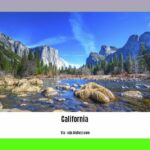Dreaming of Florida’s Gold Coast? Imagine sun-kissed beaches, pulsating nightlife, and opulent oceanfront residences. The Gold Coast—encompassing Miami-Dade, Broward, and Palm Beach counties—offers a spectacular stretch of Florida coastline. This is your comprehensive guide to understanding this iconic region. We’ll delve into the distinct characteristics of each county, from Miami’s high-octane energy to Palm Beach’s refined elegance, coupled with practical insights like navigating the real estate market and understanding local culture. Discover hidden gems and well-known hotspots, perfect for planning a getaway, relocating permanently, or simply satisfying your curiosity about this unique area, this guide provides invaluable insights to enrich your experience and future investments. For more Florida coastal exploration, check out this helpful [Naples map](https://www.lolaapp.com/map-naples/).
Exploring the Allure of Florida’s Gold Coast: Unveiling Hidden Gems and Unique Experiences
The Florida Gold Coast is more than a destination; it’s a vibrant tapestry woven from the diverse threads of Miami-Dade, Broward, and Palm Beach counties. Each area boasts its own distinct character, creating a region that seamlessly blends sun-drenched beaches with sophisticated urban life. Picture striking Art Deco architecture, immaculate golf courses, world-class dining, and a captivating mix of Latin rhythms and old-world charm. This region of contrasts offers something for everyone, from thrill-seekers to relaxation enthusiasts.
Miami’s Dynamic Scene: Exploring Nightlife, Cultural Hotspots, and Culinary Delights
Miami, the beating heart of the Gold Coast, offers non-stop excitement. Here, the sun-drenched sands of South Beach meet the cutting-edge art showcased on the Wynwood Walls. The city pulsates with Cuban culture, blending seamlessly with international influences to create a vibrant, cosmopolitan atmosphere. The air crackles with ambition, entrepreneurial spirit, and undeniable glamour. You’ll be captivated by its sheer dynamism and diversity.
Beyond the iconic beaches and nightlife, Miami boasts a diverse culinary landscape. From bustling food halls brimming with global flavors to intimate restaurants showcasing innovative culinary creations, your taste buds will be tantalized. Explore Little Havana for an authentic Cuban experience, immersing yourself in its vibrant culture and savoring traditional cuisine. Don’t miss the Art Deco District, a visual feast of architectural marvels.
However, this dynamic city faces challenges. Rising real estate prices, increasing traffic congestion, and the threat of climate change are ongoing concerns. Investing in sustainable development practices and resilient infrastructure is crucial for Miami’s long-term success and livability.
Broward County’s Tranquil Waterways: Discovering Serenity, Recreation, and Family-Friendly Activities
Broward County, nestled north of Miami, offers a more relaxed and family-friendly atmosphere. Fort Lauderdale, often called the “Venice of America,” is a sprawling network of canals, offering scenic boat tours and waterfront dining experiences. Here, you’ll find lush vegetation and pristine waterways, creating a tranquil escape from the frenetic energy of Miami.
Broward County boasts expansive beaches perfect for sunbathing, swimming, and enjoying the soothing sounds of the ocean. Sawgrass Mills Mall, one of the largest outlet malls in the U.S., provides a vibrant shopping experience for bargain hunters. Explore the Everglades, offering airboat tours and a glimpse into Florida’s unique ecosystem. This county strikes a harmonious balance between urban amenities and the restorative power of nature.
Palm Beach’s Exclusive Enclaves: Experiencing Luxury, Old-World Charm, and Upscale Amenities
Palm Beach, the northernmost point, is a world of its own. Here, old-world elegance meets unparalleled luxury. Picture sprawling estates, meticulously manicured golf courses, and high-end boutiques lining Worth Avenue. Opulence is a way of life in this exclusive enclave.
Navigating Palm Beach offers a different experience; you’ll encounter a more refined and upscale ambiance than in Miami or Fort Lauderdale. Explore the Flagler Museum, a Gilded Age mansion offering a glimpse into Palm Beach’s lavish history. Enjoy world-class dining experiences and exclusive social events. Palm Beach provides an extraordinary experience for those seeking a tranquil retreat with a touch of timeless elegance. Researchers are actively studying the potential effects of rising sea levels on Palm Beach’s delicate coastal ecosystem and implementing proactive mitigation strategies.
Planning Your Gold Coast Itinerary: Essential Travel Tips and Local Insights
Before you embark on your Gold Coast adventure, consider these practical tips. Florida’s weather can be unpredictable; be prepared for sudden showers and intense humidity, especially during the rainy season (June-October). Hurricane season is a genuine concern; monitor weather forecasts and heed any warnings. Budgeting is vital, as the Gold Coast caters to a clientele with considerable financial resources; lodging, dining, and activities can be expensive. While renting a car offers flexibility, public transportation is available in major urban areas but may not be as comprehensive as in other regions. Consider ride-sharing services for convenient transportation.
Most importantly, venture beyond the beaches and tourist hotspots! Explore the rich cultural diversity, vibrant art scenes, and unique communities that define each region. Discover hidden gems, local eateries, and off-the-beaten-path attractions for an authentic Gold Coast experience.
Understanding Population Density and Industries: A Statistical Overview
| County | Population Density (approx.) | Key Industries | Notable Attractions |
|---|---|---|---|
| Miami-Dade | Very High | Tourism, Finance, International Trade | South Beach, Wynwood Walls, Little Havana, Vizcaya Museum & Gardens, Everglades National Park |
| Broward | High | Tourism, Healthcare, Aviation, Marine Industry | Fort Lauderdale Beaches, Sawgrass Mills Mall, Bonnet House Museum & Gardens, Everglades Holiday Park |
| Palm Beach | High | Tourism, Finance, Real Estate, Agriculture | Worth Avenue, Mar-a-Lago, The Breakers Palm Beach, Flagler Museum, Lion Country Safari |
Note: This data is approximate and may vary depending on the source and year of research. Further investigation is recommended for precise figures. Population densities are based on the most recent census estimates.
The Gold Coast of Florida offers a diverse spectrum of experiences, blending vibrancy, tranquility, and luxury. Whether you seek the pulsating energy of a global metropolis, the relaxed pace of a coastal community, or the refined elegance of an exclusive enclave, you can find your ideal rhythm and customize an experience that is uniquely yours.
Decoding Florida’s Coastal Development Regulations: A Comprehensive Guide for Builders and Homeowners
The allure of Florida’s Gold Coast draws developers and homeowners from around the globe with its sun-drenched beaches, vibrant cities, and opulent lifestyle. However, this idyllic setting presents a unique challenge: a complex and often intricate regulatory environment. Successfully navigating this landscape requires meticulous preparation and a thorough understanding of the applicable rules and regulations. This guide provides a comprehensive overview of the key aspects of coastal development regulations in Florida’s Gold Coast.
Navigating the Regulatory Maze: Understanding Federal, State, and Local Laws and Agencies
Florida’s coastal development is governed by a multi-layered system encompassing federal legislation, state regulations primarily administered by the Florida Department of Environmental Protection (FDEP), and local municipal ordinances. This intricate web of permits, approvals, and compliance requirements can be daunting.
Federal regulations, such as those under the Clean Water Act and the Endangered Species Act, establish broad environmental protection standards. State regulations, administered by the FDEP, address coastal construction, wetland protection, and environmental resource management. Local governments, including county commissions and city councils, enact zoning laws and building codes that further regulate coastal development within their jurisdictions.
Understanding Key Stakeholders: Navigating the Development Process with Expert Guidance
Several key stakeholders influence the development process. The FDEP sets overall environmental requirements and issues permits for coastal construction and wetland alterations. Local governments enforce zoning regulations, building codes, and land development standards. Environmental consultants play a crucial role in navigating the regulatory complexities, conducting environmental assessments, and ensuring project compliance. Legal counsel specializing in environmental and land use law is essential for interpreting regulations and advocating for project approvals. Community groups and environmental organizations also play a role in shaping development decisions, often advocating for stricter environmental safeguards.
The Permitting Process: From Initial Assessment to Final Compliance
Successfully navigating the regulatory landscape for development on Florida’s Gold Coast requires a meticulous and well-organized approach. Here’s a detailed breakdown of the key steps:
- Conducting the Initial Assessment: Begin by thoroughly assessing the project site, including its location, size, and environmental characteristics. Determine the project’s scope and potential impacts on coastal resources. Research all applicable federal, state, and local regulations.
- Completing Environmental Impact Study (EIS): Conduct a comprehensive Environmental Impact Statement (EIS) to analyze the project’s potential environmental repercussions, including impacts on wetlands, water quality, protected species, and coastal erosion. This study should identify mitigation measures to minimize adverse impacts.
- Submitting Permit Applications: Prepare and submit all required permit applications to the appropriate regulatory agencies, including the FDEP and local government agencies. Ensure that all applications are complete, accurate, and supported by detailed technical data.
- Allowing Public Comment Period: Be prepared for a public comment period, during which stakeholders can voice their concerns and provide feedback on the project. Address any concerns raised and be willing to revise the project plan if necessary to mitigate negative impacts.
- Monitoring Construction: Once permits are approved, commence construction in accordance with all permit conditions and environmental standards. Implement a robust monitoring program to ensure compliance with erosion control measures, water quality standards, and other environmental safeguards.
- Scheduling & Completing Final Inspections: Upon completion of construction, schedule final
- Uncover Timeless Ancient Greece Female Names: A Guide to Choosing the Perfect Name - August 9, 2025
- Explore Ancient Greece Artifacts: Unveiling Iconic Treasures - August 9, 2025
- Unveiling Ancient Greek Marriage: Customs & Laws Revealed - August 9, 2025
















